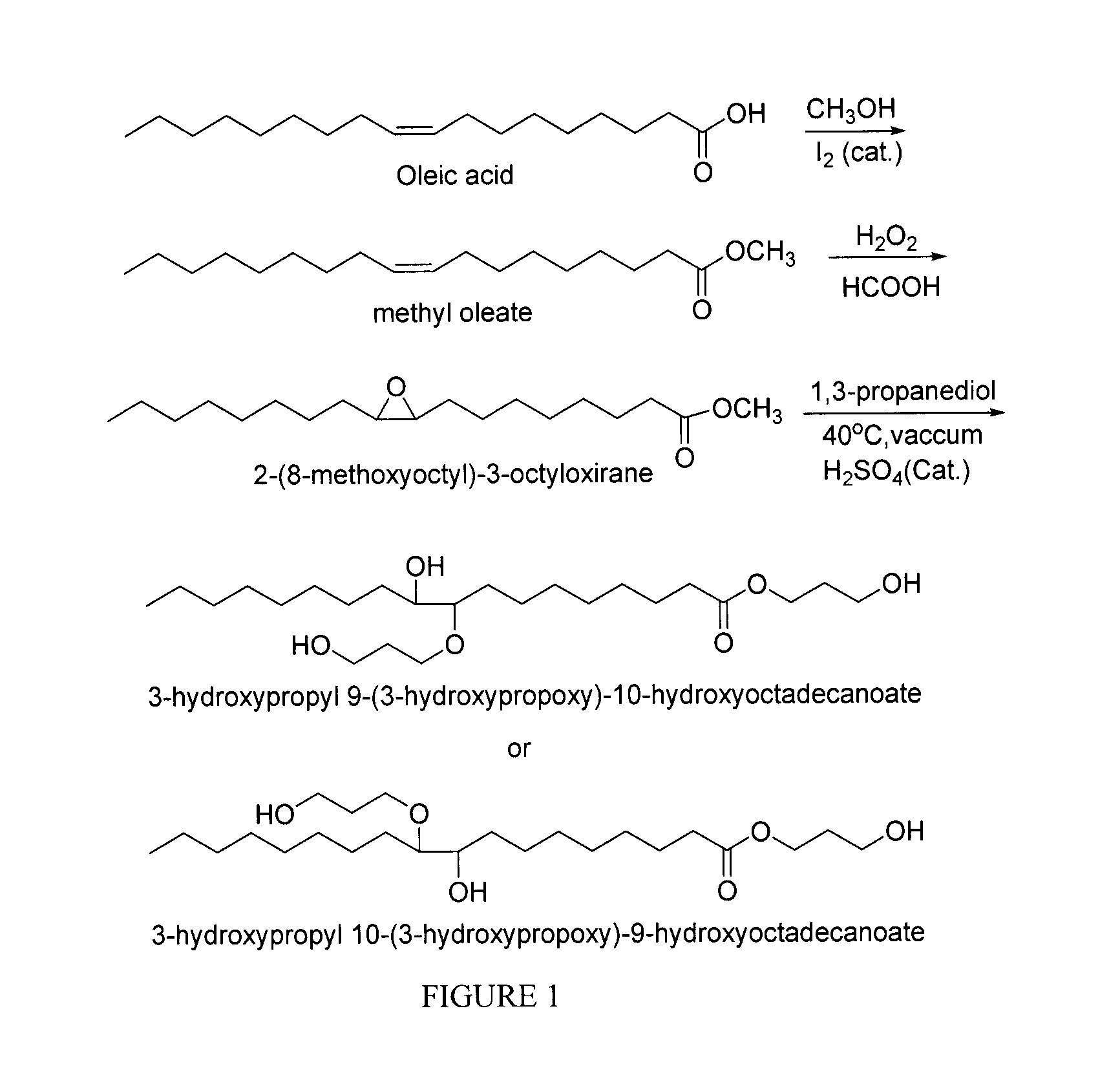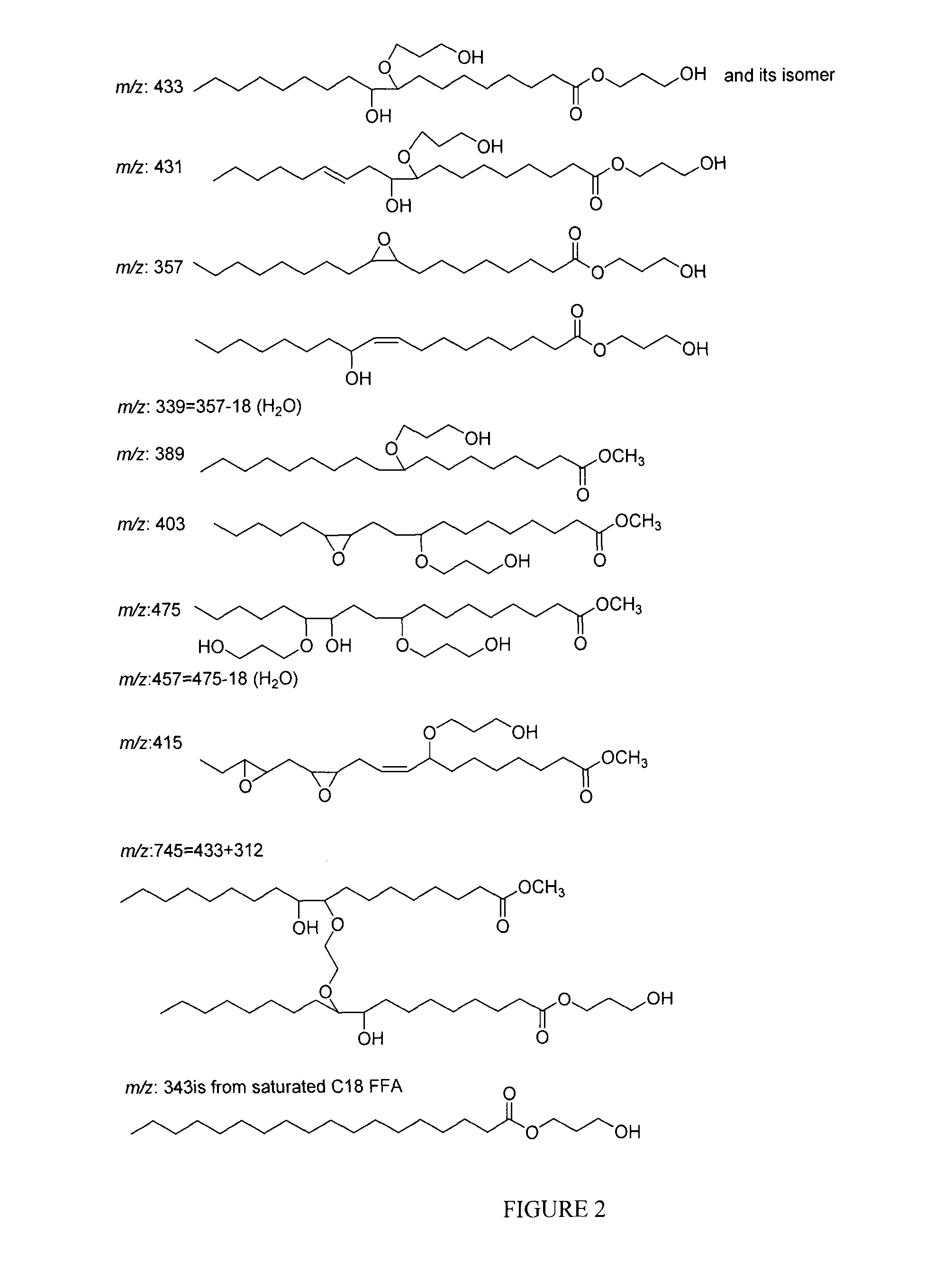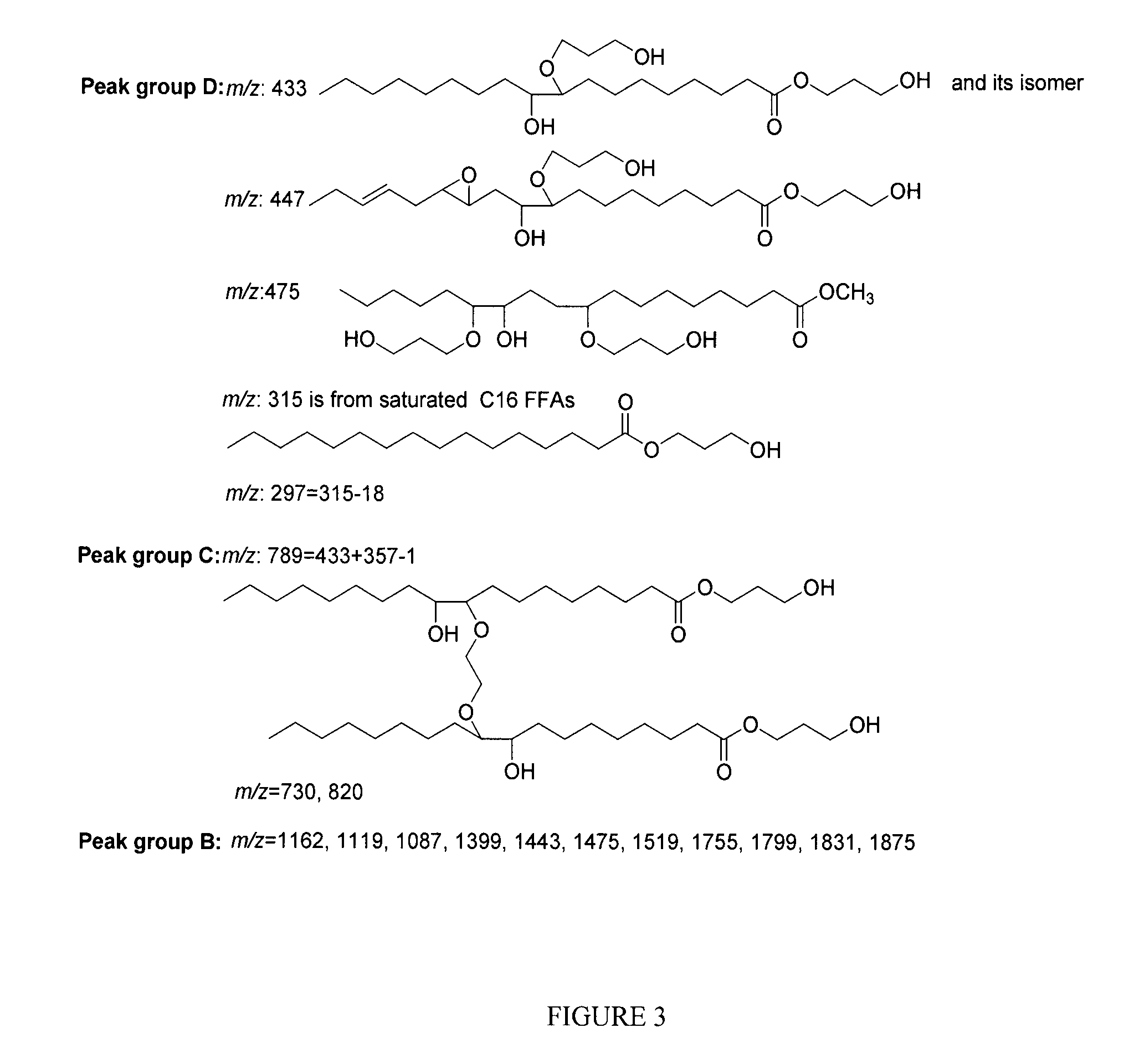Polyol synthesis from fatty acids and oils
- Summary
- Abstract
- Description
- Claims
- Application Information
AI Technical Summary
Benefits of technology
Problems solved by technology
Method used
Image
Examples
example 1
Esterification of Oleic Acid to Make Methyl Oleate (MO)
[0043]Oleic acid (200.0 g, 354.0 mmol), methanol (200.0 ml) and iodine (2.0 g, 1.0%), were refluxed for 12 hr. The progress of the reaction was monitored by thin layer chromatography (TLC). After the reaction, excess methanol was removed under reduced pressure and the residue was extracted with ethyl acetate. The ethyl acetate was washed with a solution of sodium thiosulfate and subsequently washed the organic layer with water, NaHCO3 and brine, dried over Na2SO4 and concentrated with rotary evaporator to give the desired methyl oleate (210.5 g).
example 2
Structures were Identified by NMR
[0044]1H NMR of MO: 300 MHz, Chemical shifts in CDCl3 (ppm) 5.35 (—CH═CH—, 2H), 3.65 (—OCH3, 3H), 2.30 (—CH2C═OOCH3, 2H) (2.05, 1.65, 1.30 (—CH2—), 0.90 (—CH3)
[0045]1H NMR of EMO: 300 MHz, Chemical shifts in CDCl3 (ppm), 2.90 (Epoxidation part, 2H), 3.65 (—OCH3, 3H), 2.30, (Beside the Epoxidation part, 2H), 1.65, 1.50, 1.30 (—CH2—), 0.90 (—CH3)
[0046]1H NMR of HEMO: 300 MHz Chemical shifts in CDCl3 (ppm), 4.25 (—C═OOCH2—, 2H), 3.80, 3.70, 3.50, 3.20 (—CH2OH, 6H, —OH, 1H), 0.90 (—CH3)
example 3
Epoxidation of Methyl Oleate (EMO)
[0047]To a stirred solution of methyl oleate (MO) (200.00 g, 675 mmol) and formic acid (62.09 g, 1.35 mol) cooled in an ice bath (0° C.), H2O2 (30.0% in H2O, 306.00 mL, 2.70 mol) was added slowly. The reaction was then allowed to proceed at room temperature with vigorous stirring until LC / MS analysis indicated that MO had been consumed (around 19 hr). The reaction was then transferred to a separatory funnel, and ethyl acetate (500 mL) was added and the lower aqueous phase was removed. The organic phase was then washed with water, NaHCO3 and brine, dried with Na2SO4, filtered, concentrated using a rotary evaporator, and placed under vacuum until constant weight was achieved to yield epoxidized oleic acid (EMO) as a clear light yellow oil (225.0 g).
PUM
| Property | Measurement | Unit |
|---|---|---|
| Temperature | aaaaa | aaaaa |
| Temperature | aaaaa | aaaaa |
| Temperature | aaaaa | aaaaa |
Abstract
Description
Claims
Application Information
 Login to View More
Login to View More - R&D
- Intellectual Property
- Life Sciences
- Materials
- Tech Scout
- Unparalleled Data Quality
- Higher Quality Content
- 60% Fewer Hallucinations
Browse by: Latest US Patents, China's latest patents, Technical Efficacy Thesaurus, Application Domain, Technology Topic, Popular Technical Reports.
© 2025 PatSnap. All rights reserved.Legal|Privacy policy|Modern Slavery Act Transparency Statement|Sitemap|About US| Contact US: help@patsnap.com



